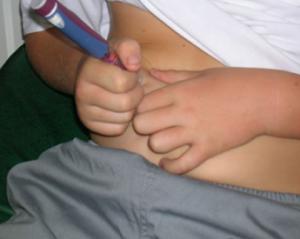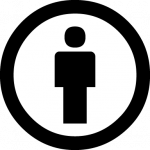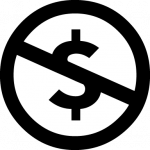
Image adapted from room231isb under a Creative Commons license: BY-NC-SA.
The Endocrine Sequence teaches the basic principles of hormone secretion and action and the clinical disorders which result from abnormalities of hormonal activity. Students are expected to be familiar with the functions of the endocrine glands, the structure, secretion and action of the important hormones, and the major clinical endocrine disorders. Emphasis will be placed on understanding pathophysiology and being able to use general principles in endocrine phsyiology (e.g. negative feedback) or in the management of endocrine disorders (e.g., insulin management) in consideration of specific circumstances and clinical cases.
Sequence Directors:
Arno K. Kumagai, M.D.
Thomas J. Giordano, M.D., Ph.D.
dScribe: Sarah Sophia Na
Syllabus
Goals and objectives
The Endocrine Sequence is a two-week unit designed to teach the basic principles of hormone secretion and action and the clinical disorders which result from abnormalities of hormonal activity. Students are expected to be familiar with the functions of the endocrine glands, the structure, secretion and action of the important hormones, and the major clinical endocrine disorders. Emphasis will be placed on understanding pathophysiology and being able to use general principles in endocrine physiology (e.g. negative feedback) or in the management of endocrine disorders (e.g., insulin management) in consideration of specific circumstances and clinical cases.
Course Structure
The sequence consists of lectures, small group discussions, and pathology laboratories. The lectures will be given by faculty members of the Departments of Physiology, Pathology, Pediatrics and Internal Medicine. Small group sessions will focus on the pathophysiology of clinical endocrine disorders and will be taught by clinical faculty members. The two pathology labs will be taught by your regular lab professors. A list of the faculty is attached.
Attendance at lectures is strongly encouraged. There are two required activities during this sequence: the Clinical Conference on March 6th at 10:00 am and the Endocrine Small Group Activities on Thursday, March 5th and Friday, March 6th. Some of the material covered in small groups will not be covered elsewhere and will be on the final exam. Please divide each of the 11 cases among members of your small group (2 students per case), review the cases and answer the questions. Come prepared to discuss your assigned case during small group.
Textbook and Media
There is no required textbook for the course. A recommended textbook for reference is:
Gardner, G, Shoback, D. Greenspan's Basic and Clinical Endocrinology. 8th ed. McGraw-Hill Medical, 2007. ISBN: 978-0071440110
Copies of the Greenspan are on reserve in Taubman Medical Library.
Media
Gallery of Endocrine Images: There is a slideshow Gallery of Endocrine Images which will be posted on the course website with the lecture slides. Please feel free to browse it at your leisure. It is often said that diagnosis of endocrine disease is based on a “gestalt”—the sum of diverse clues in the history and physical exam, and since some of the disorders result in characteristic facial, skin or bony changes, visualization helps in remembering what goes with what. The images in the Gallery will help reinforce important material from lectures. Since this material will be on the exam, the Gallery might help with studying for the exam.
Examination and Grading
There will be two final examinations, a final written exam and a pathology practical exam. Both will be given starting on March 6, 2009. Questions for the written exam will be taken from lectures, small groups sessions, and reading assignments. Questions will test both mastery of factual content and ability to apply concepts learned in lecture and small groups to clinical problems. The written exam will contribute 90% to the final grade and the Pathology exam will contribute 10%. Attendance and participation in the Clinical Conference and Endocrine small groups is required. On-time sign-in will be required, and attendance at the Clinical Conference and participation for both days of the Endocrine Sequence Small Groups is worth 5 points towards the final exam grade (1 point for the Conference, 2 points for each small group). Except under extraordinary circumstances, remediation will not be given for either activity. The written exam will consist entirely of multiple-choice questions this year.
Final grades will follow the standard Component II guidelines:
Pass 75.00% and above (cumulative score)
Fail 74.99% and below (cumulative score)
Problems or Questions
Questions related to the Endocrine Sequence can be directed to Dr. Kumagai (Lectures and Small Groups) or Dr. Giordano (Pathology Labs). One of us should be at all the lectures. Please feel free to contact either of us. We strongly encourage students to ask for clarification of lecture or small group material. Please remember, no question is too basic or "stupid," and a clear understanding of the material will help you take better care of your patients!
Learning Outcomes
Students are expected to be familiar with the functions of the endocrine glands, the structure, secretion and action of the important hormones, and the major clinical endocrine disorders. Emphasis will be placed on understanding pathophysiology and being able to use general principles in endocrine physiology (e.g. negative feedback) or in the management of endocrine disorders (e.g., insulin management) in consideration of specific circumstances and clinical cases.
Reading List
There is no required textbook for the course. A recommended textbook for reference is:
Gardner, G, Shoback, D. Greenspan's Basic and Clinical Endocrinology. 8th ed. McGraw-Hill Medical, 2007. ISBN: 978-0071440110
Copies of the Greenspan are on reserve in Taubman Medical Library.
Media
Gallery of Endocrine Images: There is a slideshow Gallery of Endocrine Images which will be posted on the course website with the lecture slides. Please feel free to browse it at your leisure. It is often said that diagnosis of endocrine disease is based on a “gestalt”—the sum of diverse clues in the history and physical exam, and since some of the disorders result in characteristic facial, skin or bony changes, visualization helps in remembering what goes with what. The images in the Gallery will help reinforce important material from lectures. Since this material will be on the exam, the Gallery might help with studying for the exam.

Image adapted from room231isb under a Creative Commons license: BY-NC-SA.
Jump to:
| Document Title | Creator | Downloads | License |
|---|---|---|---|
|
02.27.09 Lecture Handout: Regulation of Neurophypophyseal Function |
Roger Grekin
|
||
|
03.03.09 Lecture Handout: Disorders of Calcium Metabolism |
Roger Grekin
|
| Document Title | Creator | Downloads | License |
|---|---|---|---|
|
M2 Endocrine Lab 1 |
Gerald Abrams
Stephen Ramsburgh
|
||
|
M2 Endocrine Lab 2 |
Gerald Abrams
Stephen Ramsburgh
|
| Document Title | Creator | Downloads | License |
|---|---|---|---|
|
02.25.09: Introduction to Pituitary Physiology |
Arno Kumagai
|
||
|
02.27.09: Water Balance |
Roger Grekin
|
||
|
03.02.10: Adrenal Physiology & Steroid Pharmacology; Disorders of the Adrenal Cortex Adrenal Pathophysiology |
Gary Hammer
|
||
|
03.03.09: Calcium Metabolism |
Roger Grekin
|
||
|
03.04.09: Insulin Action |
Arno Kumagai
|
||
|
03.05.09(a): Introduction to Diabetes |
Arno Kumagai
|
||
|
03.05.09(b): Complications of Diabetes |
Arno Kumagai
|
||
|
03.05.09(c): Treatment of Diabetes |
Arno Kumagai
|
||
|
03.06.09: Spontaneous Hypoglycemia |
Arno Kumagai
|
||
|
Images of Endocrine Disorders |
Arno Kumagai
|
| Document Title | Creator | Downloads | License |
|---|---|---|---|
|
2007 Daily Schedule: M2 Endocrine |
Dept. Staff
|
||
|
2008 Daily Schedule: M2 Endocrine |
Dept. Staff
|
||
|
2009 Daily Schedule: M2 Endocrine |
Dept. Staff
|
||
|
2010 Daily Schedule: M2 Endocrine |
Dept. Staff
|
| Document Title | Creator | Downloads | License |
|---|---|---|---|
|
02.25.09(a): Pituitary Physiology |
Aken Desai
Michael Mathis
|
||
|
02.25.09(b): Thyroid Physiology |
Aken Desai
Michael Mathis
|
||
|
02.26.09(a): Thyroid Disorders |
Aken Desai
Michael Mathis
|
||
|
02.26.09(b): Neurohypophysis |
Aken Desai
Michael Mathis
|
||
|
02.27.09(a): Water Balance |
Aken Desai
Michael Mathis
|
||
|
02.27.09(b): Endocrine Pathology I |
Aken Desai
Michael Mathis
|
||
|
02.27.09(c): Endocrine Pathology II |
Aken Desai
Michael Mathis
|
||
|
03.02.09(a): Anterior Pituitary Disorders |
Aken Desai
Michael Mathis
|
||
|
03.02.09(b): Adrenal Physiology Pharmacology |
Aken Desai
Michael Mathis
|
||
|
03.02.09(c): Adrenal Cortex Disease |
Aken Desai
Michael Mathis
|
||
|
03.03.09(a): Calcium Metabolism |
Aken Desai
Michael Mathis
|
||
|
03.04.09(a): Growth and Development Abnormalities |
Aken Desai
Michael Mathis
|
||
|
03.04.09(b): Insulin Action |
Aken Desai
Michael Mathis
|
||
|
03.04.09(c): Obesity |
Aken Desai
Michael Mathis
|
||
|
03.05.09(a): Diabetes |
Aken Desai
Michael Mathis
|
||
|
03.05.09(b): Diabetes Management |
Aken Desai
Michael Mathis
|
||
|
03.06.09(a): Spontaneous Hypoglycemia |
Aken Desai
Michael Mathis
|



